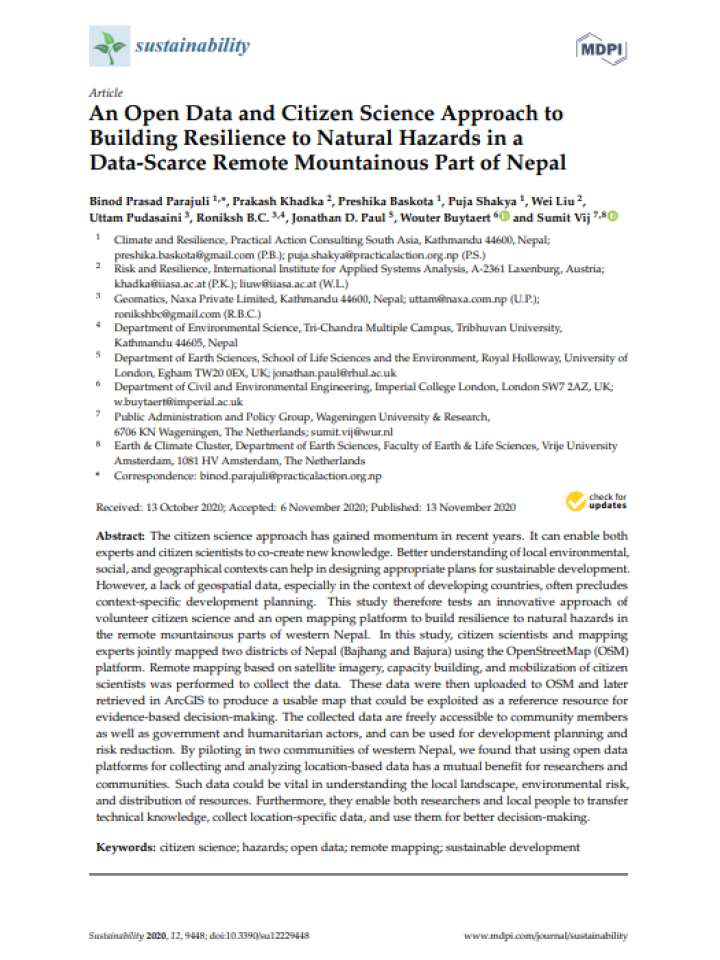An open data and citizen science approach to building resilience to natural hazards in a data-scarce remote mountainous part of Nepal
This study therefore tests an innovative approach of volunteer citizen science and an open mapping platform to build resilience to natural hazards in the remote mountainous parts of western Nepal. In this study, citizen scientists and mapping experts jointly mapped two districts of Nepal (Bajhang and Bajura) using the OpenStreetMap (OSM) platform.
The citizen science approach has gained momentum in recent years. It can enable both experts and citizen scientists to co-create new knowledge. Better understanding of local environmental, social, and geographical contexts can help in designing appropriate plans for sustainable development. However, a lack of geospatial data, especially in the context of developing countries, often precludes context-specific development planning.
Remote mapping based on satellite imagery, capacity building, and mobilization of citizen scientists was performed to collect the data. These data were then uploaded to OSM and later retrieved in ArcGIS to produce a usable map that could be exploited as a reference resource for evidence-based decision-making. The collected data are freely accessible to community members as well as government and humanitarian actors, and can be used for development planning and risk reduction.
By piloting in two communities of western Nepal, the authors found that :
- using open data platforms for collecting and analyzing location-based data has a mutual benefit for researchers and communities.
- Such data could be vital in understanding the local landscape, environmental risk, and distribution of resources.
- Furthermore, they enable both researchers and local people to transfer technical knowledge, collect location-specific data, and use them for better decision-making.
Explore further
